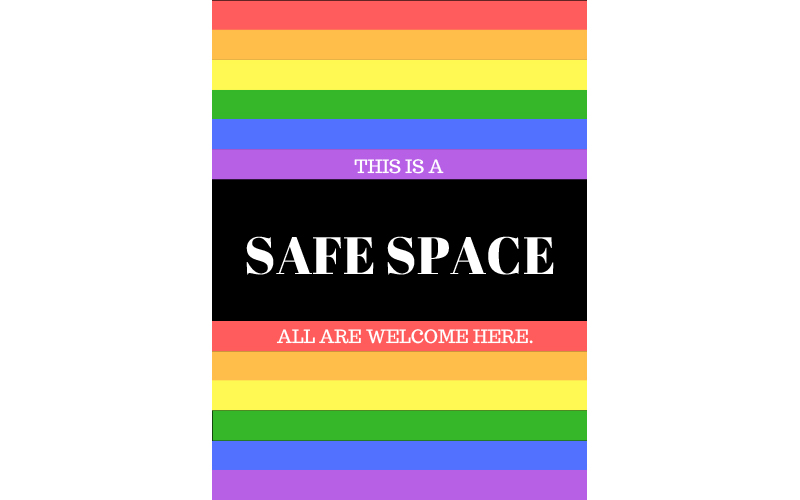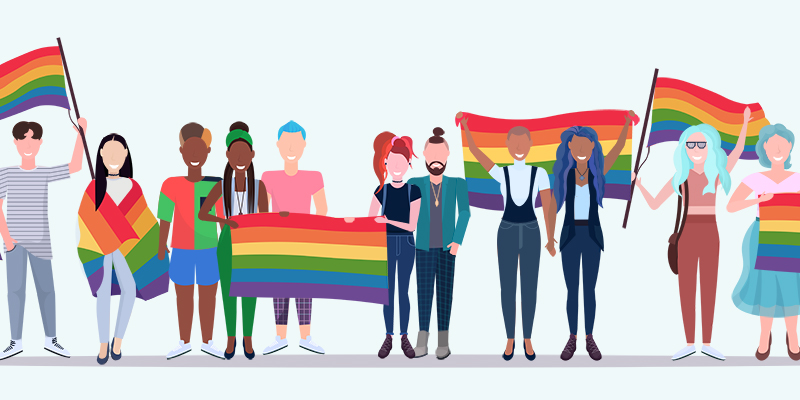Editor’s Note: Because the need to foster equity and inclusion in the classroom is as urgent as ever, this post has been updated for 2021 with new resources for educators and insights from the LGBTQ+ community. If you have resources or perspectives you think should be added, reach out anytime to hello@ozobot.com.
If you’re like us, it may feel difficult to celebrate recently, with all the reminders of discrimination and bias permeating our culture and reflecting on how we can taking action. However, amidst the heaviness was a reason to celebrate: the U.S. Supreme Court mandated that a person cannot be fired on the basis of their sexual orientation or gender identity.
As we celebrate with LGBTQ+ educators and students, we do acknowledge there is still work to be done to make students and teachers feel safe to discuss these topics in the classroom. We spoke with educators, LGBTQ+ community members, and LGBTQ+ former students to learn how educators can be allies and promote safe, accepting, and allied classroom culture.
1. Incorporate Literature That’s Reflective of All Types of Families
- Add inclusive texts to my classroom library (or requesting and/in school library) with either LGBTQIA main characters or parents/family members. Add non fiction text discussing LGBTQIA movements or biographies about people who identify different ways. Some recommendations include:

2. Have Open and Continuous Conversations about Inclusivity
- This can be as simple as incorporating Social/Emotional Learning (SEL) by teaching and discussing the following terms:
- Bravery
- Compassion
- Empathy
- In small group or whole group conversations, talk about one’s identity and what connects kids to one another and what makes them different. These open conversations help children with identity and inclusivity.
- One educator shared some ways they’ve created an inclusive classroom saying, “Another thing is trying to never fit kids into girl/boy roles. I don’t choose colors based on gender, I let them choose. There are not girl/boy books. When we do plays or activities they can play opposite gender roles if they choose. This may seem random, but I also notice that when I teach prefixes and suffixes I like to include ones like “trans” because the more students know and understand the better.”
- At Santa Monica High School, staff were provided with a rainbow card to display on their lanyards that state, “I’m an Ally.” The non-verbal approach sends a message to students that there are safe adults and spaces to go to.
- A 4th-grade teacher recommended showing allyship in subtle ways. She said, “It’s small but I also have a small pride flag in my room. I’ve had at least one student come back and come out to me. She told me she noticed it. I started pointing out the flag but I do have some kids who ask.”
- June is a great opportunity to do this because it’s Pride month, but the best thing is for teachers to fold LGBTQ+ narratives and concerns into the curriculum throughout the year seamlessly. They can celebrate that the first person to allegedly start the Stonewall “riot” in New York was a Black trans woman who threw a high heel shoe at the police who were raiding the bar.
- The best thing teachers can do is be celebratory of LGBTQ+ culture, wearing rainbow colors and including Zoom backgrounds of famous community members that have made an impact in their field and the world, and folding in lessons that engage a strengths based narrative of how much the queer and trans community have contributed. Interrupting any jokes at the expense of gender and sexual orientation is important, and providing language for kids on how to view language around being queer or performing gender in unconventional ways as unique, special, and creative.
3. Nip Problematic Language in the Bud
- One LGBTQ+ High school teacher discussed the implications of not addressing problematic language publicly. In high school and middle school settings, students may passively use inappropriate language such as “that’s gay” or use other homophobic and transphobic language without understanding the consequences and meaning of the language. In this reflection, this educator, who identifies as a gay man, realized that behavior like this needs to be nipped in the bud immediately. “I feel like that’s sounds obvious but I think there were a few times earlier in my career where I just ignored it and I feel like if there were gay kids in my class I sent them a message that I didn’t care.” You never know if there are students struggling with their identities. Also, students may view your silence as an educator as complicity or that it’s acceptable classroom language and behavior.
- One elementary educator said, “Even in 4th grade, every year I have the conversation about not calling classmates ‘gay’ when they’re mad at them. I usually tell them I have friends who are gay. It’s offensive to me and to them. For some it was the first time they’ve heard that. I know some of them don’t know anyone who is gay or don’t know that someone they know is gay.”
4. Incorporate Explicit LGBTQ+/Anti-Bias Lessons in Your Classroom
We recommend the following resources:
- LGBTQ Pride Month and Education Resources
- We Teach NYC Pride Month Resources
- GLSEN Educator’s Guide to Pride
5. Celebrate LGBTQ+ People in STEM
Along with women and the BIPOC community, the LGBTQ+ community is underrepresented in STEM/STEAM careers. Share our list of LGBTQ+ individuals in STEM, ranging from chemists to software engineers, or conduct original research with your students to celebrate their contributions and impact across many industries.
How to Get Parent Buy In:
We hope these resources help you foster a safe space for LGBTQ+ educators and students alike. When implementing some of the teaching strategies above, be aware that some parents may jump to the conclusion that these conversations are sexual in nature. Here are some tips for navigating parent concern:
- Explain to parents that these conversations are about families—and how different types of people can have different types of families.
- Call in admin to support you. Make a case that admin’s role is to ensure all students have access to safe learning environments.
- Open yourself to continuing to educate and inform. Don’t expect someone to change from one conversation.
If you have resources or perspectives you think should be added to the list above, we’d love to hear them! Reach out anytime to hello@ozobot.com.









